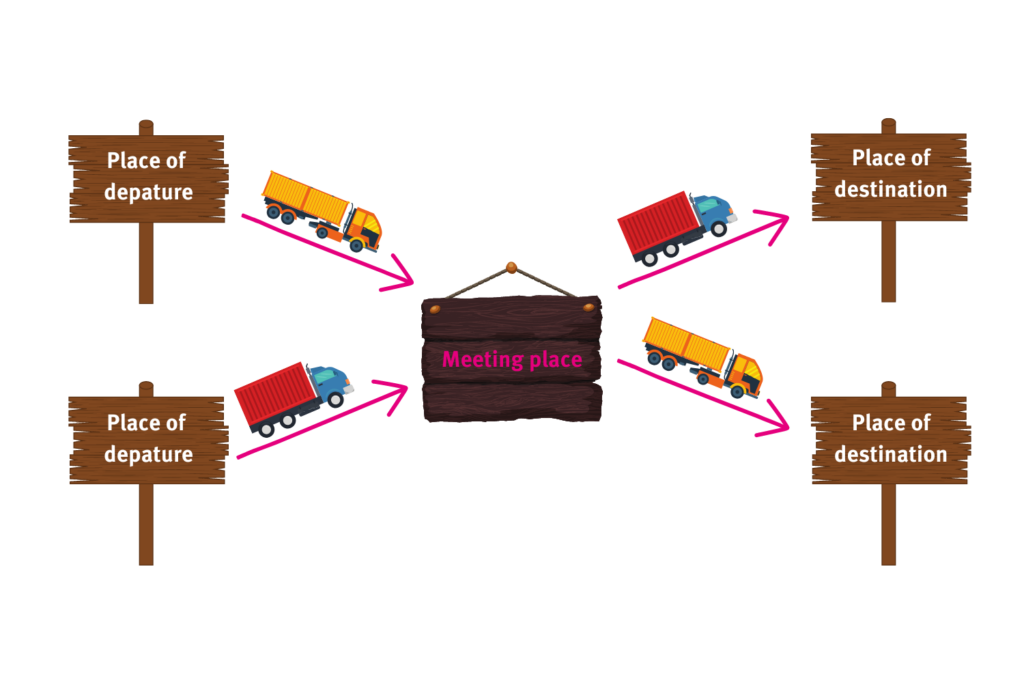Swap transport
In swap transports, a “swap” of the loading unit such as the semi-trailer/container is carried out at a previously set location where the trucks meet. This location is on the route of two different tours. Afterwards, both trucks continue to drive in different directions. Usually, this swap is carried out on motorway rest stops, parking lots or on the premises of a customer. Swap transports are especially useful for forwarders with recurring daily transports and cooperating logistics companies with so-called grouped-load transports.
The most common variant is truck transport. For the other means of traffic such as vessel, plane or train, these swap locations can also be inland ports, airports or train stations.
Advantages of swap transport:
- More flexible vehicle planning because of shorter routes
- Shorter travel and shift times for the drivers
- Lower expenses for overnight stays
- Fewer empty trips
Disadvantages of swap transport:
- Delay of one participant leads to both tours being delayed
- More organisational effort
- Possibly detours
- Swap requires time
